When I say “superfood”, you say… ?
All of those super healthy foods easily spring to mind.
So why is that most people forget about watercress?
After all, watercress is part of the cruciferous or brassica veggies family. Those all-star genes means it’s related to powerhouses of nutrition such as kale, cabbage, Brussels sprouts, and broccoli.
And with relatives as healthy as those, this leafy veggie on the family tree deserves some serious attention.
Get to Know Watercress
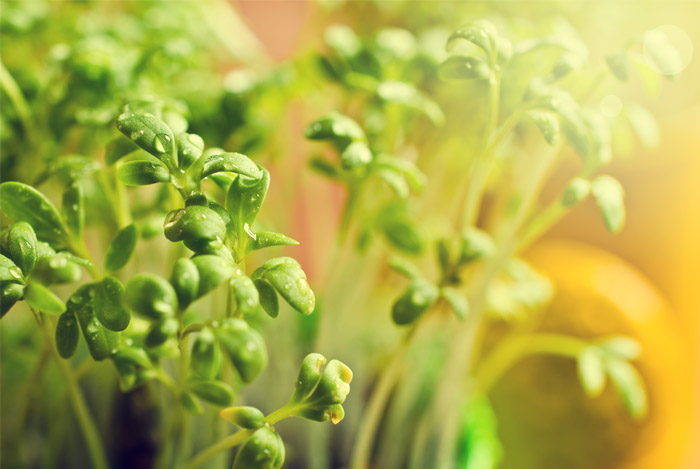 This dark green leaf grows naturally in spring water and slow meandering streams. What a life, huh?
This dark green leaf grows naturally in spring water and slow meandering streams. What a life, huh?
It has a slightly peppery taste that’s usually overshadowed by relative arugula’s super peppery flavor. You may actually prefer watercress to arugula if you’re not into that strong bite.
Plus, watercress has an interesting balance of soft leaves and crunchy edible stalks, making it a perfectly delectable green in my book.
I think you’ll agree once you hear about how healthy it is.
Thanks to the fact that it scores very high marks on the Aggregate Nutrient Density Index (ANDI), watercress has been gaining appreciation.
This measure is based on vitamin, mineral, and phytonutrient content per calorie. Lots of nutrients for very few calories earns high marks on the ANDI, which ranges in scores from 1 to 1000.
Watercress has the highest score possible – 1000.
It also ranks #1 on the CDC nutrition density list because it’s bursting at the seams with nutrients.
So let’s check out these 8 amazing health benefits of watercress and see why it’s worth adding this superfood to your diet.
It Can Prevent Cancer
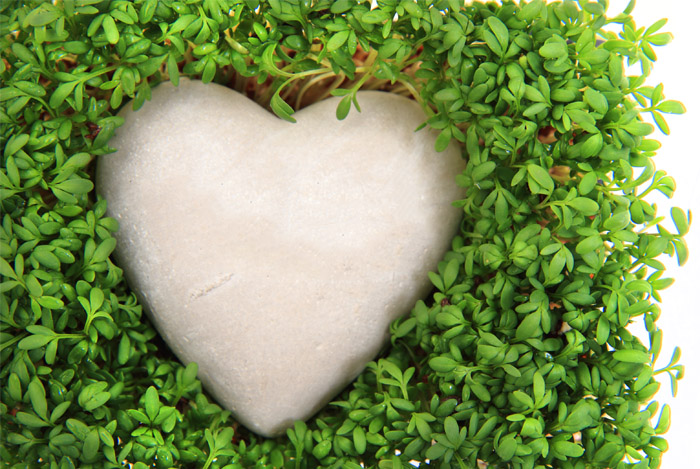 According to one review, more than 70% of studies found links between cruciferous vegetables, such as watercress, and protection against cancer.
According to one review, more than 70% of studies found links between cruciferous vegetables, such as watercress, and protection against cancer.
That’s probably because cruciferous veggies contain glucosinolate phytonutrients, which are part of the isothiocyanates (ITCs) family. The two ITCs most widely studied are indole-3-carbinol (I3C) and sulforaphane, which watercress has a ton of.
The National Institute of Cancer says these compounds may:
- Help protect cells from DNA damage
- Inactivate carcinogens
- Have antiviral and antibacterial benefits
- Have anti-inflammatory properties
- Induce cell death (apoptosis)
- Inhibit tumor blood vessel formation and tumor cell migration (needed for metastasis)
Watercress is also rich in a specific glucosinolate known as gluconasturtiin. This is a precursor to the ITC phenethyl isothiocyanate (PEITC). Watercress contains more PEITC than any other cruciferous veggie, which is awesome news since PEITC has been explored extensively for its ability to prevent cancer.
One study discovered that PEITC has the power to stop new blood vessels from forming so tumors don’t have access to a blood supply and can’t grow.
Having low oxygen levels in your body (also known as hypoxia) is a key trigger for tumor growth. When the tumor grows, it needs more oxygen than it can absorb from surrounding healthy tissue so it sends out signals to create a direct blood supply to continue growing.
Hypoxia-inducible factor (HIF) is the specific molecule that stimulates the development of these new blood vessels for the tumor.
And according to one study, watercress can “turn off” HIF.
When four healthy breast cancer survivors consumed around two cups of watercress, their PEITC levels were elevated and their HIF activity (measured in their white blood cells) was reduced.
This means that the watercress not only raised levels of cancer-fighting phytonutrients, but it also made their bodies less hospitable for cancer growth.
An even more interesting study was performed by researchers at the University of Ulster who were curious to learn about the effects raw watercress consumption has on certain biomarkers associated with cancer risk.
Out of the 60 men and women in the trial, half were smokers. They had to add 3 oz. of raw watercress to their normal diets for eight weeks.
The amount of DNA damage to their lymphocytes and plasma lutein, retinol, alpha-tocopherol, and beta-carotene was measured before and after the trial period.
The results?
Eating watercress daily helped:
- Reduce basal DNA damage by 17%
- Increase beta-carotene levels by 33%
- Skyrocket lutein levels by 100%
And guess what? The participants who were smokers experienced greater DNA-protective results from the watercress than the non-smokers.
“The results support the theory that consumption of watercress can be linked to a reduced risk of cancer via decreased damage to DNA and… by [possibly] increasing carotenoid concentrations.”
Treat Cancer While Protecting Healthy Cells
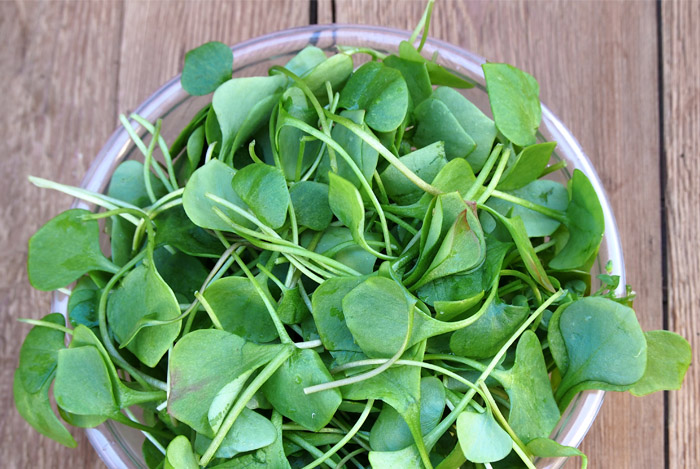 While I3C gets all the glory, sulforaphane is no stranger to cancer treatment either.
While I3C gets all the glory, sulforaphane is no stranger to cancer treatment either.
This compound can stop histone deacetylase (HDAC), an enzyme that aids the progression of cancer cells, dead in its tracks.
But it also does a LOT more.
During one study, sulforaphane was observed to selectively target cancerous cells and benign cells that were showing early signs of abnormality, while leaving healthy prostate cells untouched.
Sulforaphane is both effective and safe; a rare combination during cancer treatment since therapy tends to be a double-edged sword. While treatments try to kill off the cancerous cells, they unfortunately destroy healthy cells in the process as well.
Leading me to the next point: diindolylmethane (DIM).
DIM, “a metabolite of I3C” has been shown to be “superior to IC3 as a chemoprotective compound for breast cancer and prostate cancer.”
Researchers from a study completed at Georgetown University gave rats a lethal dose of radiation to simulate radiation therapy.
All of the untreated rats died, but over half of the rats who received daily DIM injections for two weeks remained alive after 30 days.
When this experiment was duplicated on mice, scientists noticed that the DIM-treated mice had higher levels of red and white blood cells and blood platelets.
This is great news because radiation therapy usually dwindles these levels.
“When we have consistent findings showing protective effects [in cruciferous vegetables], we need to pay attention to it,” says Jeannie Gazzaniga-Moloo, PhD, RD. “Cruciferous vegetables should be at the top of the list of what we’re recommending [people eat].”
Protect Your Eyes
 As a card carrying member of the cruciferous veggie family, watercress is an amazing source of eye-loving nutrients such as vitamin A and beta-carotene, and the carotenoids – lutein and zeaxanthin.
As a card carrying member of the cruciferous veggie family, watercress is an amazing source of eye-loving nutrients such as vitamin A and beta-carotene, and the carotenoids – lutein and zeaxanthin.
Not getting enough lutein and zeaxanthin has been linked to advanced age-related macular degeneration (AMD).
The American Optometric Association states that AMD is “the leading cause of blindness in people over age 55 in the Western world and the incidence is expected to triple by 2025.”
Making sure to give our bodies enough lutein and zeaxanthin reduces our risks of developing AMD. We’ll even have extra protection against cataract growth.
Good news: just one cup of raw watercress contains 1961 mcg of lutein and zeaxanthin!
Lower Blood Pressure & Take Care of Your Heart
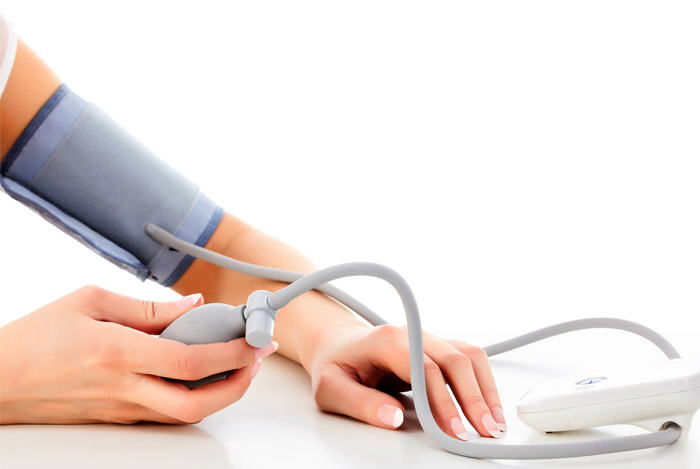 Interestingly enough, high levels of lutein and zeaxanthin have also been shown to aid those with cardiovascular disease.
Interestingly enough, high levels of lutein and zeaxanthin have also been shown to aid those with cardiovascular disease.
According to one study, higher blood levels of lutein and zeaxanthin were associated with less atherosclerosis, or artery hardening, than those with lower levels of the carotenoids.
Plus, participants with higher carotenoid blood levels were also less likely to succumb to heart attacks.
But antioxidants can’t take all the credit for why watercress is so heart-healthy. You also have to praise watercress’ nitrate content.
Wait a minute, aren’t nitrates unhealthy preservatives added to hot dogs?
Yes and no.
Nitrates are added to preserve color and slow the growth of microorganisms in products such as bacon and processed meat. When this type of nitrate is converted to nitrite by your body, you can wind up with negative consequences for your health, thanks to an abundance of nitrosamines.
Most fruits and veggies contain high levels of naturally occurring dietary nitrates. Nitrates are a salt of nitric acid and are an essential nutrient for plants to grow.
Because certain fruits and veggies also contain vitamin C, a natural inhibitor of nitrosamines, eating them gives you all the benefits of healthy nitrates without all the negatives.
Dietary nitrates have been demonstrated to have a range of beneficial vascular health benefits including:
- Reducing blood pressure
- Inhibiting platelet aggregation
- Preserving or improving endothelial dysfunction
- Enhancing exercise performance in healthy individuals and patients with peripheral arterial disease
After nitrates are converted to nitrites, they become nitric oxide in your blood.
Although this sounds like it’d be a bad thing, it’s actually awesome because high levels of nitric oxide have been linked to lower blood pressure and relaxed blood vessels. Elevated levels also seem to prevent blood clotting.
During one small study, scientists gave 17 healthy, nonsmoking, young adults nitrate supplements equivalent to the amount of nitrate found in 150–250 grams of nitrate-rich vegetables.
After just three days the participants lowered their diastolic blood pressure by an average of 3.7 mm Hg.
That’s just in three days!
DASH dieters take note: nitrate-rich veggies like watercress are king.
Lower Cholesterol… Seriously
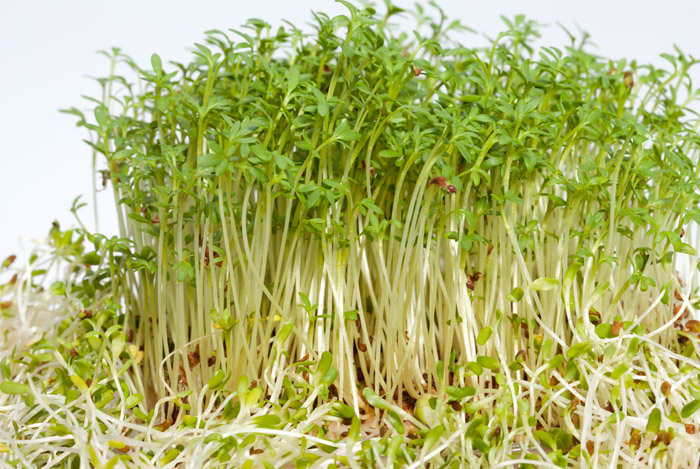 If you have high cholesterol, watercress is going to be your new BFF.
If you have high cholesterol, watercress is going to be your new BFF.
You see, when rats with high cholesterol were given watercress every day for 30 days, they:
- Reduced their triglycerides by 43%
- Decreased their total cholesterol by 37%
- Lowered their LDL, or ‘bad’ cholesterol, by 49%
- Raised their HDL, or ‘good’ cholesterol, by 16%
Similar benefits were observed in another study when rats consumed a high fat diet and were given watercress extract. In just 10 days, the rats normalized their total cholesterol levels, triglycerides, and LDL levels, while slightly raising their HDL.
I may start adding a serving of watercress to my diet after seeing those results. Watercress salad, anyone?
Keep Your Bones Strong & Healthy
 Your mother may have poured you a big glass of milk to keep your growing bones strong when you were a kid, but maybe she should have made you a watercress smoothie instead.
Your mother may have poured you a big glass of milk to keep your growing bones strong when you were a kid, but maybe she should have made you a watercress smoothie instead.
Watercress actually has more bioavailable calcium than milk.
Yes, you read that right.
For every gram of raw watercress, you’ll find 1.5 mg of calcium, which is higher than the 1.13 mg of calcium per gram of whole milk you’d be drinking.
Are you surprised by this fact? Because I know I was!
Here’s the cherry on top: watercress lacks casein, the hard-to-digest protein found in milk, so it’s easier on your body.
A study in the American Journal of Clinical Nutrition confirms that getting calcium solely from dairy products is dangerous because “casein, calcium, lactose, saturated fat, and cholesterol” all contribute to poor health.
Researchers stress that all of the same “nutrients found in milk are readily available in healthier foods from plant sources” like watercress.
But calcium’s not the only nutrient needed to build and maintain strong, healthy bones.
You also need to keep up with your K vitamins. After all, low intakes of vitamin K have been linked to higher risks of bone fractures.
Vitamin K helps you avoid that ugly cast by improving calcium absorption, reducing the amount of vitamin K you urinate out, and modifying the matrix of bone proteins.
The results from one study even showed that women with adequate vitamin K levels in their diets were less likely to break a hip.
You’ll get all of your vitamin K for the day via just one cup of watercress, which comes in at 85 mcg, or 106% of your daily value.
Manage Diabetes
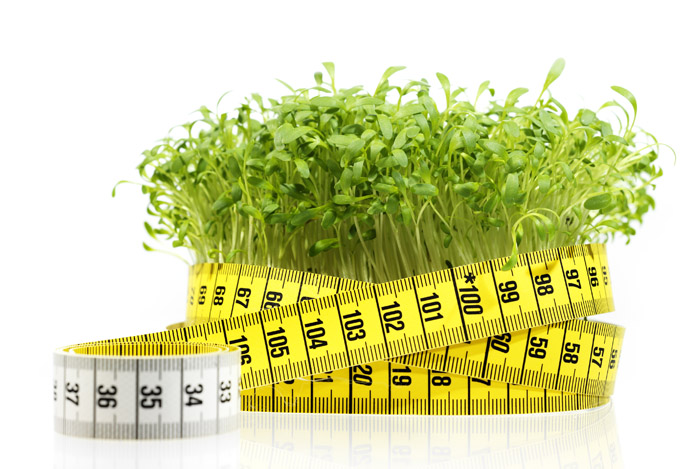 Scientists from one study wanted to compare how the treatments of daily watercress extract and insulin worked to manage blood sugar levels in type 2 diabetic rats.
Scientists from one study wanted to compare how the treatments of daily watercress extract and insulin worked to manage blood sugar levels in type 2 diabetic rats.
They learned that the rats given the watercress extract for the longest period of time had lower blood sugar levels than the rats using insulin to treat their high blood sugar.
And let’s not forget that watercress also contains alpha-lipoic acid, an antioxidant that has been studied for its role in:
- Lowering glucose levels
- Increasing insulin sensitivity
- Preventing oxidative stress-induced changes in patients with diabetes
While we still need to see the results from additional clinical trials, we should look forward to the possibility of watercress becoming a natural supplement that’s just as effective as a prescription drug.
Get Healthy, Glowing Skin
 Since watercress is full of antioxidants and minerals, it helps flush out toxins and improve our skin’s health. It also has naturally antimicrobial and antibacterial properties.
Since watercress is full of antioxidants and minerals, it helps flush out toxins and improve our skin’s health. It also has naturally antimicrobial and antibacterial properties.
In fact, 10 out of 11 women in one study experienced “visible improvements to their skin” in just four weeks after adding one bag of watercress to their diet every day.
Thanks to the watercress, the women saw a reduction in visible wrinkles, improvements in their skin texture, a decrease in brown spots, and fewer skin bacteria.
Plus, 100 g (or around 3 cups) of watercress contains 45 mg or 72% of your DV of skin-loving vitamin C.
Vitamin C is a killer antioxidant that fights free radical damage that would otherwise rapidly age our skin (think: wrinkles, dullness, age spots, etc.).
We also need vitamin C to create collagen to give our skin the firmness and elasticity that’s associated with young, supple skin.
When your collagen game is strong, your overall skin texture improves and your skin’s able to smooth out wrinkles.
Check out these other 15 miracle foods guaranteed to make your skin glow in your selfies.
Watercress may not be as popular as other superfoods out there, but it sure has the goods to back up its title as healthiest superfood.
Just like kale, you can toss a handful of watercress in your smoothies for a nice switch up. I personally love topping my avocado egg salad with watercress to keep my bread from getting soggy, but I’ve also seen delicious recipes for watercress soup out there.
Try experimenting with this unique superfood; these eight amazing health benefits are too awesome to ignore.
When’s the last time you ate watercress? Did any of these health benefits convince you to skip the kale this week and opt for watercress? Share your thoughts with me in the comments!
The post 9 Amazing Health Benefits of Watercress appeared first on Nutrition Secrets.
http://www.nutritionsecrets.com/amazing-health-benefits-of-watercress/
No comments:
Post a Comment